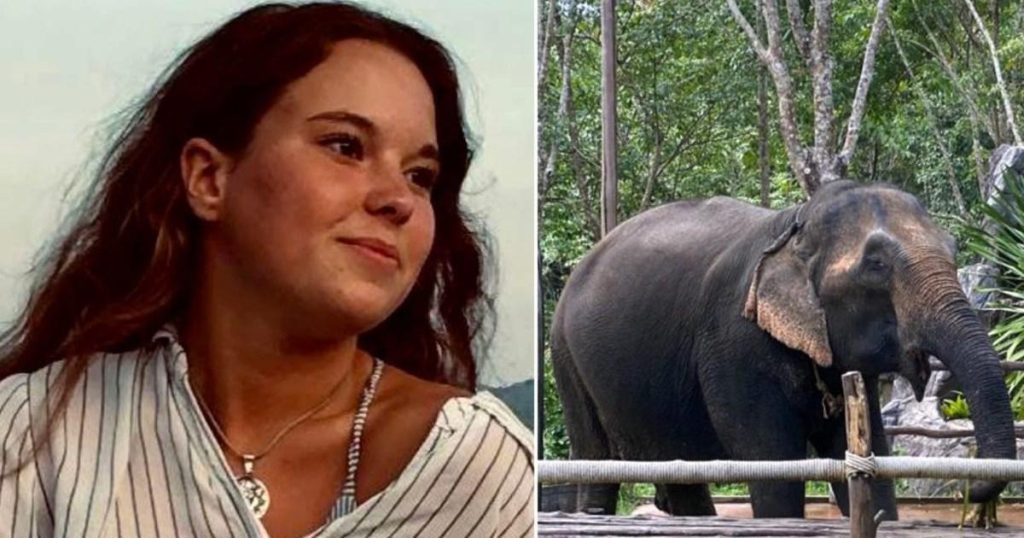Blanca Ojanguren Garcia, a 22-year-old Spanish national, tragically lost her life in an elephant attack while on holiday in Thailand. Garcia, a law and international relations student at the University of Navarra in Pamplona, Spain, was participating in a university exchange program in Taiwan at the time of the incident. She had travelled to Thailand during a break from her studies. The attack occurred at the Koh Yao Elephant Care & House, a sanctuary located on the island of Ko Yao Yai in the Andaman Sea, a popular tourist destination known for its beaches and natural beauty. The sanctuary offers various activities, including elephant bathing, which is a popular attraction for tourists. Garcia was washing an elephant when it suddenly attacked her with its tusk, leading to fatal injuries. Initial reports suggest that the elephant may have been experiencing stress due to the constant interaction with tourists and the pressures of living outside its natural habitat.
The tragic incident highlights the potential risks associated with close interactions with captive wild animals, even in seemingly controlled environments like sanctuaries. While many sanctuaries promote ethical treatment and aim to provide a haven for rescued animals, the inherent nature of wild animals and their potential for unpredictable behavior remains a significant concern. The stress of captivity, human interaction, and the disruption of their natural social structures can contribute to anxiety and aggression in these animals. This tragic event underscores the need for careful consideration and stringent safety protocols when engaging in such activities, both for the safety of tourists and the well-being of the animals. Further investigation is required to determine the specific circumstances that led to this particular attack.
The Spanish Foreign Ministry confirmed Garcia’s death and stated that the Spanish Consulate in Bangkok is providing assistance to her family. Garcia hailed from Valladolid, a city located southwest of Pamplona, and came from a military family. Reports indicate that her boyfriend, who is also a soldier, witnessed the horrific event. This incident echoes a similar tragedy that occurred just months earlier, in July, when another Spanish tourist was killed by an elephant during a safari in South Africa. The 43-year-old victim was reportedly taking pictures of a group of elephants when the attack occurred, emphasizing the dangers of approaching wild animals too closely, especially outside the safety of a vehicle.
These incidents raise important questions about the ethics and safety of wildlife tourism. While these encounters can be thrilling and educational, they also carry inherent risks, both for humans and animals. Critics argue that the commodification of wildlife for entertainment and profit can contribute to the exploitation and mistreatment of animals. The demand for close-up interactions and photo opportunities can create stressful environments for captive animals, potentially leading to behavioral changes and increased aggression. Tourist attractions offering elephant rides, bathing, and other forms of close contact have faced increased scrutiny in recent years due to concerns about animal welfare.
The debate surrounding wildlife tourism is complex and multifaceted. While some argue for a complete ban on activities involving close interaction with wild animals, others believe that responsible tourism can play a role in conservation efforts by raising awareness and generating funds for protecting endangered species. However, finding a balance between conservation, animal welfare, and the economic benefits of tourism remains a significant challenge. It is crucial for tour operators, sanctuaries, and governments to prioritize the well-being of animals and implement strict safety regulations to minimize the risks associated with these activities. Tourists also have a responsibility to be informed and make conscious choices about the types of experiences they support.
Moving forward, it is essential to learn from these tragic incidents and re-evaluate the practices surrounding wildlife tourism. Increased emphasis on education, responsible tourism practices, and stricter regulations are crucial to ensure the safety of both humans and animals. Further investigation into the specific circumstances that led to Garcia’s death is necessary to prevent similar tragedies in the future. This includes a thorough assessment of the safety protocols in place at the sanctuary, the elephant’s history and behavior, and the potential contributing factors such as stress and environmental conditions. Ultimately, the goal should be to create a sustainable and ethical approach to wildlife tourism that prioritizes the well-being of animals while providing meaningful and safe experiences for visitors.











